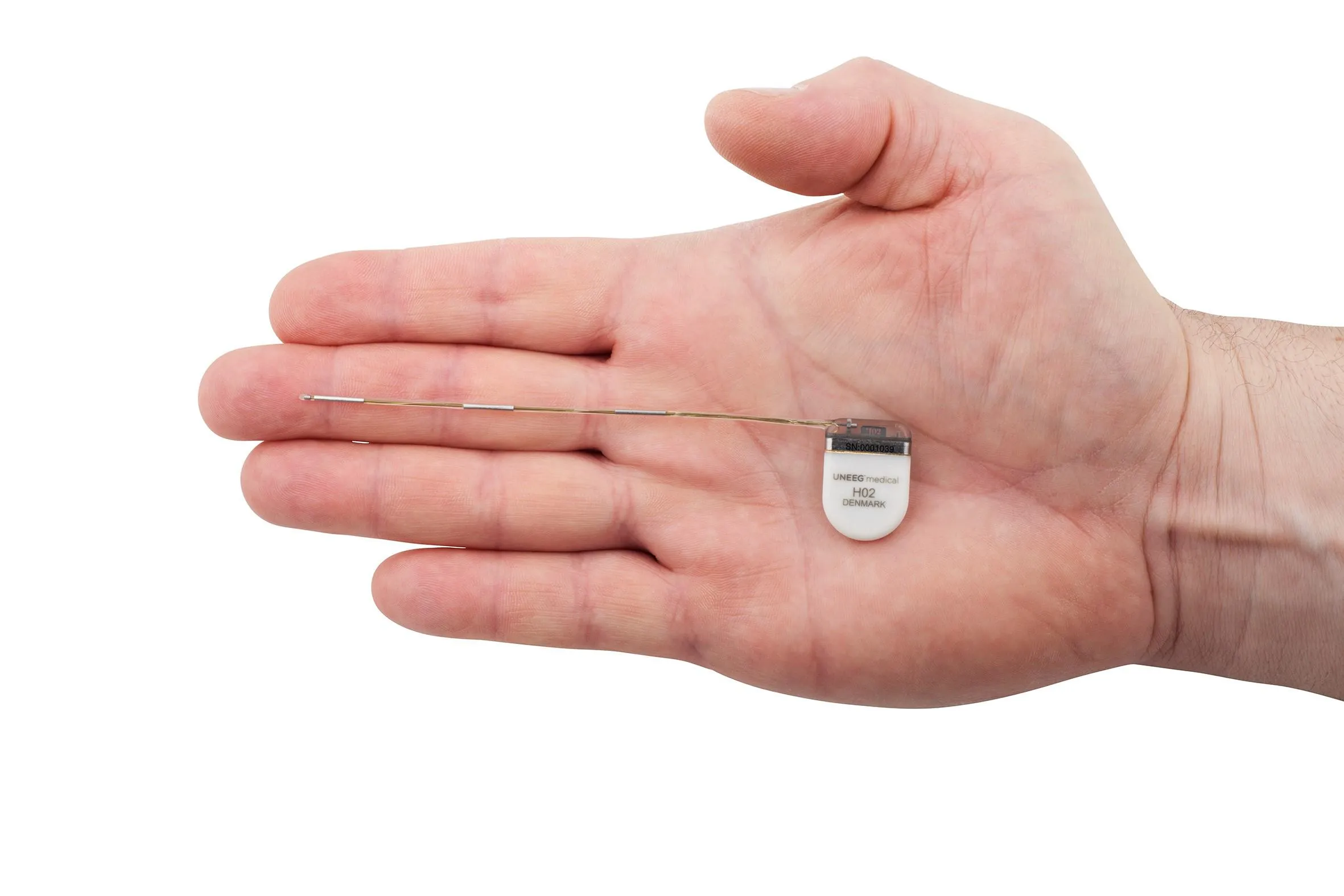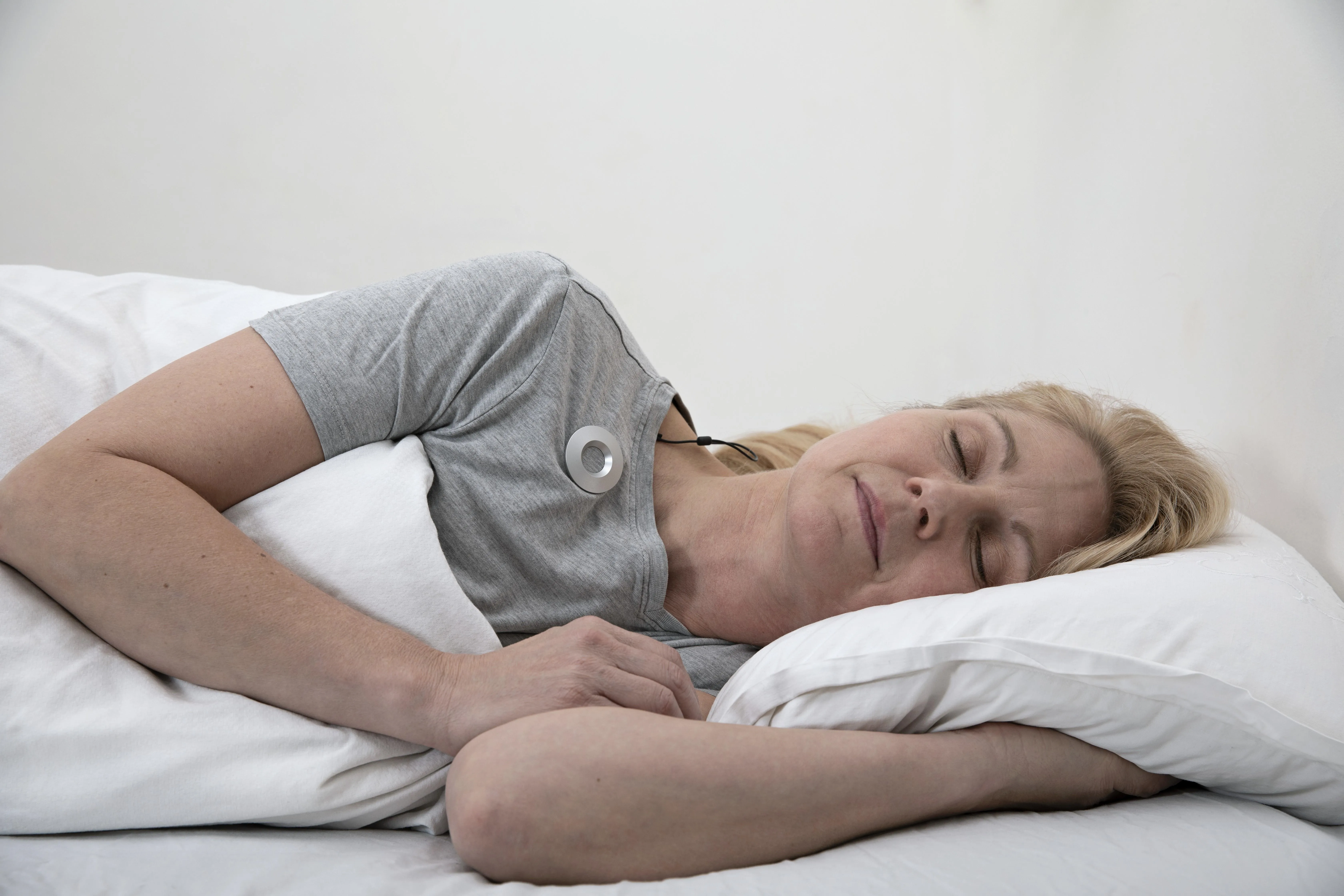New research has found that an electronic device placed under the scalp is an effective and feasible means of accurately tracking epilepsy.

Professor Mark Richardson and Dr Pedro Viana from the Department of Basic & Clinical Neuroscience at the Institute of Psychiatry, Psychology & Neuroscience at King's College London, in partnership with the Mayo Clinic and UNEEG medical, have demonstrated that seizures can be tracked in the home environment, giving clinicians access to data that could have a dramatic impact on the way in which epilepsy is treated in the future.
The research was funded by the Epilepsy Foundation of America and published in Epilepsia.
"It is vital that people with treatment resistant epilepsy are able to access the best possible care. This is made significantly more challenging by the fact that clinicians must rely on patient reporting to establish when episodes have taken place," says Professor Mark Richardson.
Our study has been able to provide a vital and viable alternative to relying on self-reported episodes. A small tracker placed under the skin was able to detect seizures far more accurately than the participants themselves.
Professor Mark Richardson, Paul Getty III Professor of Epilepsy at the Institute of Psychiatry, Psychology & Neuroscience, and the study's senior author
Tracking epileptic seizures over time is challenging. It relies on people keeping a subjective diary and people with epilepsy can experience seizures without realizing. This is particularly important for those with treatment resistant epilepsy, who have ongoing seizures despite treatment with anti-seizure medication - known to occur in around a third of people with epilepsy.
Novel subcutaneous electroencephalography (sqEEG) systems have been proposed as a way to overcome this but the feasibility, acceptability and overall clinical utility of these systems had not been tested until now.

sqEEG is an AI powered miniature implantable EEG for real life monitoring of people with epilepsy. It is about the size of a UK pound coin and has a small 10cm wire attached. Under local anaesthetic, it is placed behind the ear beneath the scalp and the wire is directed to where the seizures are expected to occur.
The sqEEG wirelessly communicates with an external recorder attached with an adhesive pad behind the ear and fixed with a magnet or clip from which clinicians and researchers are able to access the data.
This study recruited 10 adults with treatment resistant epilepsy and over 15 months almost 72,000 hours of real-world brainwave data were collected, capturing 754 seizures. Participants largely reported that the implant was acceptable and unobtrusive, with half recording for more than 20 hours a day.
When comparing the electronic data to the participants' diaries, the participants had only correctly recorded 48 per cent of their episodes. Conversely, more than a quarter (27 percent) of episodes that they'd recorded in their diaries were not associated with seizure activity.
Researchers also found that the sqEEG system was able to more accurately track the type of seizure experienced versus the participants' diaries.
"The ability to monitor seizures in the real world, accurately collecting data on the type and timing that they occur will be an invaluable tool for clinicians moving forwards, and should hopefully have a big impact on how we approach the treatment of this life-threatening condition," says Dr Pedro Viana.
While this is an important step forwards, it's now vital that we conduct larger trials to further validate this technology, with a view to hopefully making this available to everyone in need.
Dr Pedro Viana, Senior Clinical Research Fellow and Neurologist at the Institute of Psychiatry, Psychology & Neuroscience and the study's lead author

Dr Benjamin Brinkmann, PhD, Professor of Neurology at the Mayo Clinic, USA said, "Overall, these results demonstrate that Subscalp EEG devices are able to provide objective information about seizures and brain activity over long timeframes. This technology could provide physicians and patients with new insights about long-term patterns and help optimize their epilepsy treatment."
Jonas Duun-Henriksen, Senior Director AI & Science at UNEEG medical said, "This study is a significant milestone for UNEEG medical. While we've long heard from both people living with epilepsy and their treating physicians that they are very satisfied with our system and helped improve outcome, this is the first time a study based on more than a full year of continuous EEG recordings confirms those experiences."
"We've gained valuable quantitative insights throughout the study, and we're especially grateful for the valuable feedback from the clinicians at King's College London - which we've already started incorporating into our solution to further enhance its clinical value."






